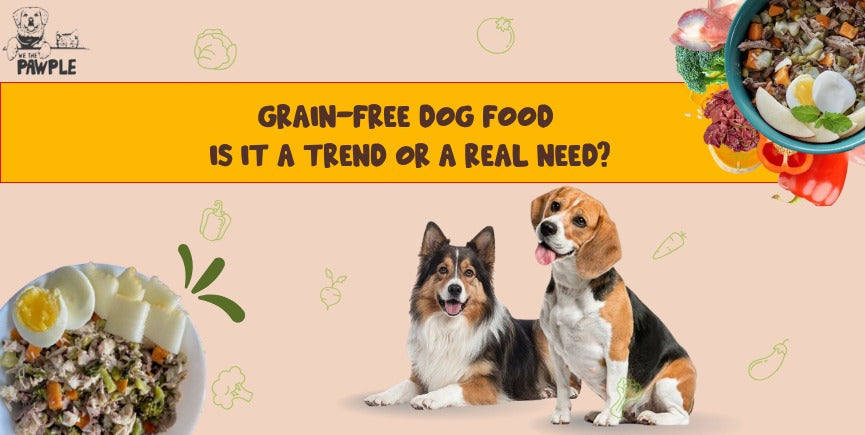
Grain-Free Dog Food in India: Is It a Trend or a Real Need?
Share
As more Indian dog parents become conscious of what goes into their pet’s bowl, the term “grain-free dog food” has started making regular appearances in conversations, pet stores, and product labels. But is this just another marketing buzzword, or is it a real shift in how we should think about canine nutrition?
Let’s get one thing straight—dogs don’t need grains. Not in the wild, not in nature, and not in their bowls. And yet, if you flip the pack of most commercial dog foods available in India, you’ll find rice, corn, or wheat right at the top of the ingredient list. Why? The answer isn't health—it's cost.
The Real Reason Grains Dominate Commercial Dog Food
In the Indian market, most kibble is designed to be affordable, storable, and profitable. And grains like rice, wheat, and corn serve that purpose well. They’re cheap fillers that bulk up the product, bring down manufacturing costs, and boost profit margins. But they add little to no real nutritional value for dogs.
Unlike humans, who have long digestive tracts and enzymes that help ferment and break down grains, dogs have short, acidic digestive systems. Their stomach acid is strong—designed to quickly break down raw meat, bones, and fat. There is no scope for grain fermentation or slow breakdown in a dog’s gut. So most grains pass through their system without offering any meaningful benefit.
When Grains Might Be Necessary
That said, grains can have a place in some specific medical diets. Dogs with certain kidney or liver issues that require controlled protein intake may be prescribed diets with moderate grain content. In such cases, grains help provide calories without increasing protein load.
But these are therapeutic situations, guided by a vet—not everyday nutrition.
What’s the Problem with Kibble?
The majority of kibble available in India is grain-heavy and low in actual meat content. While the front of the pack might say “chicken” or “meat,” the back tells another story—where rice, wheat, or maize flour feature before any real protein. On top of that, kibble is highly processed, and the extreme temperatures used during manufacturing destroy most natural nutrients, which are then replaced with synthetic additives.
This isn’t natural dog food. It’s a commercial formula created for convenience and shelf life—not your dog’s biology.
The Grain-Free, High-Protein Alternative
Dogs are designed to thrive on high protein fresh dog food—meats, organs, and vegetables that mirror their ancestral diets. At We The Pawple, we focus on crafting food that’s fresh, functional, and species-appropriate, using real ingredients and skipping unnecessary fillers.
A grain-free dog food diet supports better digestion, healthier skin, more energy, and improved immunity. And for dogs with allergies, weight issues, or chronic gut problems, it can make a world of difference.
What Grains (If Any) Are Okay in Moderation?
If you’re exploring home-cooked or fresh food, grains like oats, quinoa, and millet can be tolerated by some dogs in small quantities. These are easier to digest than refined grains like rice or wheat—but should never be the core of the diet.
Final Thoughts
Grain-free isn’t a fad—it’s a return to what dogs are biologically designed to eat. As a responsible pet parent, knowing what fuels your dog can help them live longer, healthier lives. So read the labels, ask the questions, and remember: food that cuts corners might cost less today, but it could cost your dog’s health tomorrow.
